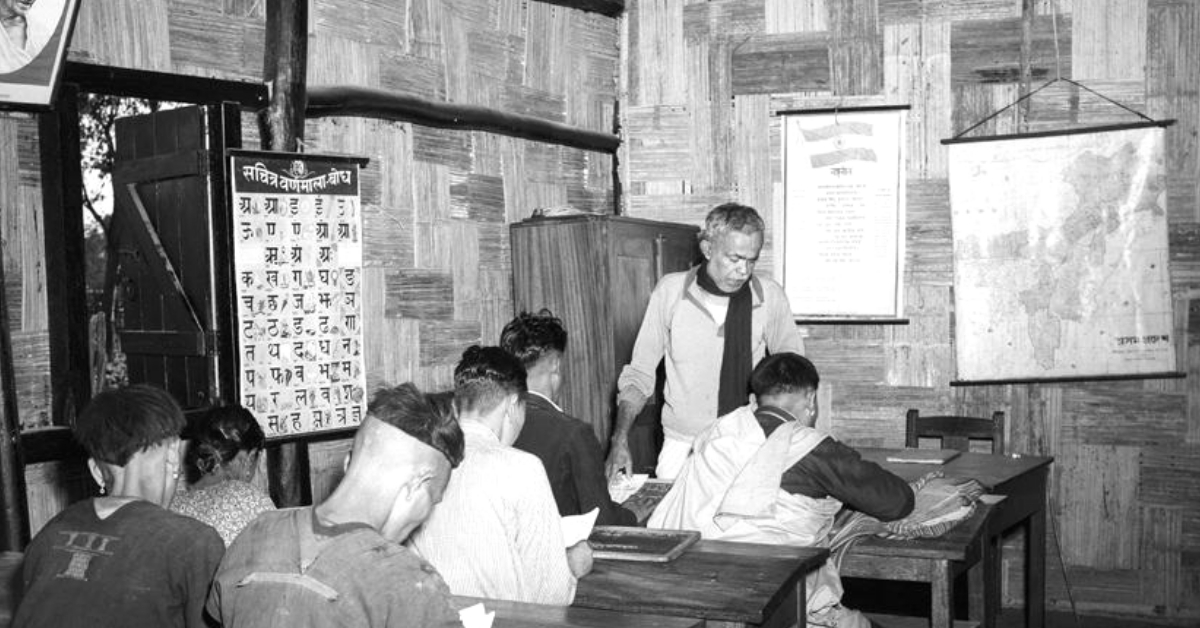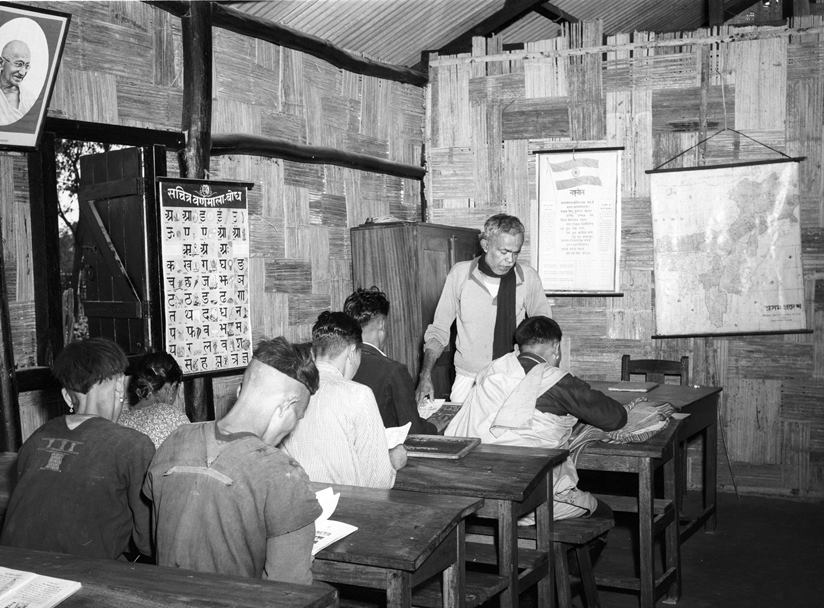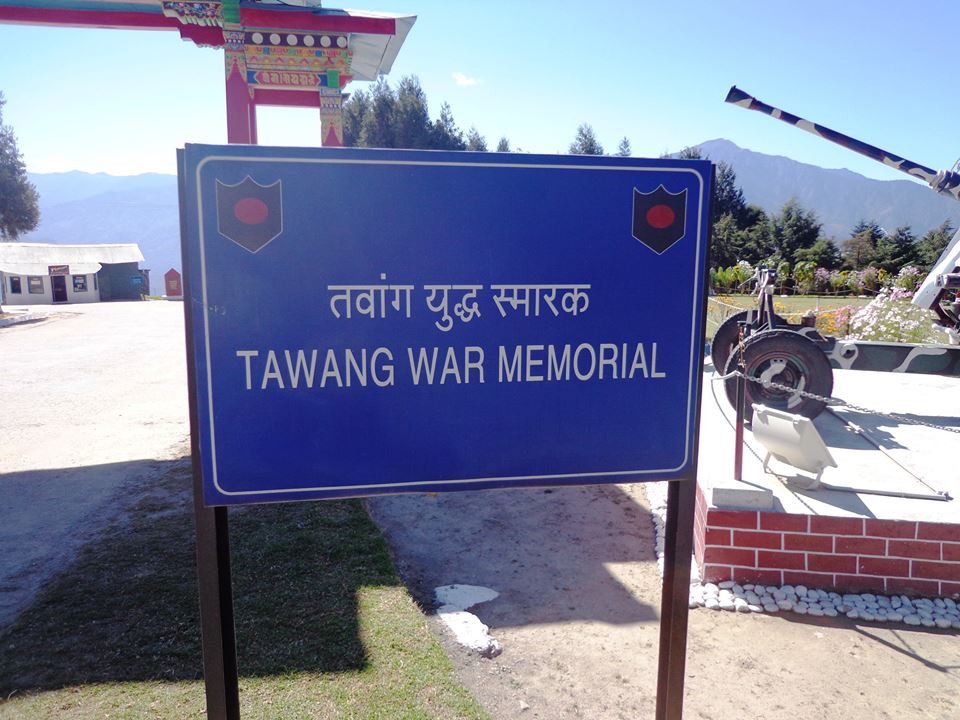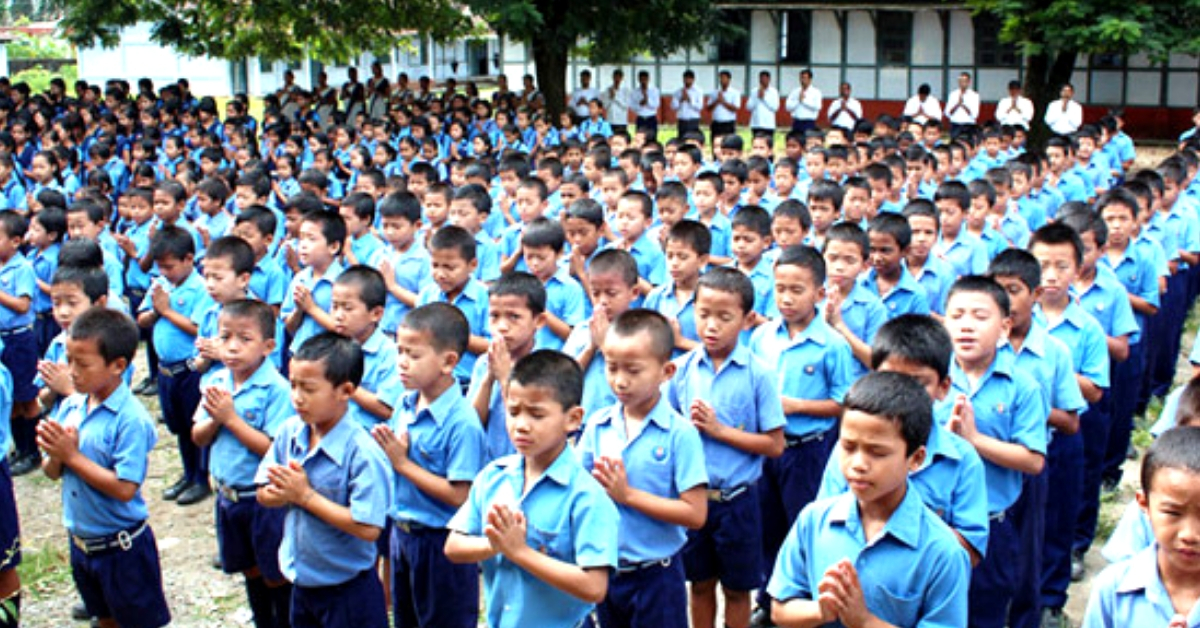The Intriguing Story of How Hindi Emerged as The Lingua Franca of Arunachal!
Did you know Arunachal is the state with the highest proportion of Hindi speakers in the Northeast? For a state with over 90 languages, this is incredible!

If the Indian government had to choose one state to represent the mind-boggling cultural diversity that exists in the country, it would probably choose Arunachal Pradesh.
With a population just under 1.4 million (as per the 2011 Census) encompassing 26 tribes and 256 sub-tribes, the people of Arunachal Pradesh speak 30 languages, although some experts have pegged that number to 50 and according to renowned language critic GN Devy, it’s 90.
In the midst of all this diversity, Hindi has emerged as the lingua franca of the state, a link language that binds this administrative unit together. Unlike its Northeastern sister states, Arunachal never had an organised movement promoting one native language.
A speaker of Adi, for example, cannot comprehend what a Nocte-speaker is saying. Thus, if a member of one tribe had to interact with someone else from another linguistic group, they would have to use a contact language. Consequently, Hindi emerged as the lingua franca.
Spoken by over 90% of the populace, one can hear it everywhere from the state assembly to playgrounds in schools. Thus, a key motivating factor behind the emergence of Hindi was its ability to emerge as a critical contact language amidst the presence of many native languages.
So, how did Hindi gain such immense popularity in the state?
Besides binding the various linguistic communities, there are political and historical factors behind this aspect. When Independence dawned upon India, this scenic state was under the administrative control of Assam, as part of its tribal areas.
In 1951, Arunachal was christened as the North-East Frontier Agency (NEFA) controlled administratively by the Governor Assam (overseen by the Ministry of External Affairs) until 1965, and Assamese became the medium of instruction in schools.
The emergence of local insurgencies in Manipur and Nagaland backed by the Chinese had caused a great deal of angst in the Indian government led by Prime Minister Jawaharlal Nehru.
“What if the China-backed separatist virus of Nagaland reached NEFA? At its eastern edge (Tirap region) Arunachal also shares a tough border with Nagaland. The Chinese could then just walk through. For Nehru was also deeply upset by having to deal with foreign pastors (Reverend Scott, notably) negotiating on behalf of the Nagas.
A decision was therefore taken to keep Christian evangelists out of what was to be renamed Arunachal Pradesh. Its tribes were brought into the national—and nationalist—mainstream through Hindi-medium education. Arunachal is now the only Hindi-speaking state in the Northeast. Talk to Kiren Rijiju in Hindi,” writes noted editor Shekhar Gupta for Rediff.
In 1965, NEFA was withdrawn from the administrative control of the Assam Governor (overseen by the Ministry of External Affairs) and placed under the control of the Union home ministry. Seven years later, it was converted into a union territory. In 1977, the union territory had its first legislature, and in February 1987, Arunachal became a full-fledged state.
The separation from Assam was acrimonious, not merely because of a border dispute, but also the imposition of Assamese as the primary medium of educational instruction. However, Assamese was side-lined following the introduction of the three-language formula in Arunachal by the Centre.

“Before 1962, people in Arunachal barely had a notion of the Indian nation state. Colonial governments had made inroads into the tribal belt, but the area was part of Outer Line [In 1873, the British-run Government of India drew an “Outer Line,” intended as an international boundary] and not the Inner Line. Moreover, the state was first governed by the Ministry of External Affairs and then it was brought under the home ministry in 1965.
This reflected a change in mindset, since New Delhi realised the importance of this region. For the British, Arunachal was a buffer zone, but after ’62 India didn’t see it that way. What followed was a gradual process of integration of the people with the nation state. For that, Hindi became a very important medium. They didn’t want a Mizoram or Nagaland-type scenario. Greater familiarity with the Indian culture and language brought stability,” says Dr Jumyir Basir, a professor of Tribal Studies at the Rajiv Gandhi University in Itanagar, speaking to The Better India.
“For current generation, however, it’s [process of integration with India] more through the mass media. People here watch a lot of Hindi serials and cinema unlike other Northeastern states. If you talk about Manipur and Nagaland, these forms of entertainment are often banned,” she adds.
Without a widely-spoken native language, schools in Arunachal Pradesh began to follow a three-language formula first established by the Centre in 1968 for all states with compulsory instruction in Hindi and English, besides a third native language.
Also Read: Arunachalis Become Millionaires For Helping India Defend Its Borders in ’62 War!
“The use and development of tribal languages in education in Arunachal Pradesh was very much restricted, though recently some attempts are being made for the development and use of the major tribal languages like Adi, Nocte, Apatani, Nishi, etc,” writes linguist Hans R Dua in his paper, ‘Linguistic minorities in India.’
Nonetheless, the first recorded exposure of the state to Hindi came during the 1962 War between India and China. Most soldiers of the Indian Army deployed there at the time were from states in the Hindi-belt, and when they recruited locals as porters, they were made to learn Hindi.
The armed forces were also responsible for the establishment of key services like healthcare, education and infrastructure, making it imperative for locals to pick up the language. Additionally, the Central government made a concerted effort to introduce and promote the language in the state for greater integration into the large Indian Union.

Nonetheless, linguists argue that such assertions are not entirely verifiable.
“From the 1970s onwards, we see actual conscious policies, for example in terms of scholarships, in terms of awards, in terms of introducing the subject at the level of schools and colleges. So, from the 1970s, we can actually trace this conscious policy of promoting the language as part of a larger language integration programme. It needs a certain time for a language programme to take effect. It needs a certain generation actually,” said Manjeet Baruah, a linguist, to Free Press Journal.
In 1977, the Indira Gandhi government had begun the process of establishing Vivekananda Kendra Vidyalayas (VKVs), following which a lot of teachers from the Hindi belt began coming into the state to teach the language, particularly in the ‘80s. This was a concerted effort by the Indian government.
“We see the result by late 80s and 90s, where we see what happens when a whole generation grows up with a language. So, we can see that today among the Northeastern states, the people in Arunachal are rather fluent in Hindi,” he added.

Having said that, the rise of Hindi has seemingly come at the cost of native languages. According to a 2017 UNESCO survey, 33 languages are endangered, while 4 are on the cusp of extinction. Responding to these circumstances, there are significant initiatives underway at the preservation and documentation of native languages in the state.
(Edited by Gayatri Mishra)
Like this story? Or have something to share? Write to us: [email protected], or connect with us on Facebook and Twitter.
If you found our stories insightful, informative, or even just enjoyable, we invite you to consider making a voluntary payment to support the work we do at The Better India. Your contribution helps us continue producing quality content that educates, inspires, and drives positive change.
Choose one of the payment options below for your contribution-
By paying for the stories you value, you directly contribute to sustaining our efforts focused on making a difference in the world. Together, let’s ensure that impactful stories continue to be told and shared, enriching lives and communities alike.
Thank you for your support. Here are some frequently asked questions you might find helpful to know why you are contributing?


This story made me
-
97
-
121
-
89
-
167











